Part 1: Proposal
To provide a fun new challenge to owners of remote control micro drone toys and to serve as a platform for increasing pilot skill.
A micro drone (also “nano-drone”) is a tiny remote controlled quadcopter. The term quadcopter comes from the fact that the device has four propellers which work together to fly the device in a very similar way to a helicopter. Quadcopters are a result of recent advancements in digital sensor technology. Even just three years ago, the sensors required for a quadcopter were not sensitive enough to achieve stable flight. I find it particularly fascinating that in just a few years this technology went from non-existent to where we are today – anyone can buy a tomato-slice sized quadcopter toy today for $29.99.
Design Statement
The purpose of this project is to design a desktop obstacle game to challenge the flight skill of pilots who have achieved a mastery of normal flight. The game consists of a game board and various plastic elements such as rings to fly through and landing pads of varying difficulty. Each element is assigned a point value for completion. Players are challenged to accumulate the most amount of points during each run.
Audience
Owners of micro drone toys who are looking for a new challenge.
Motivation
Flying a micro drone is a blast and I’m always trying to come up with a challenge from the surroundings. With this game, the obstacles are intentionally designed for great fun as well as challenge.
Part 2: Visualization




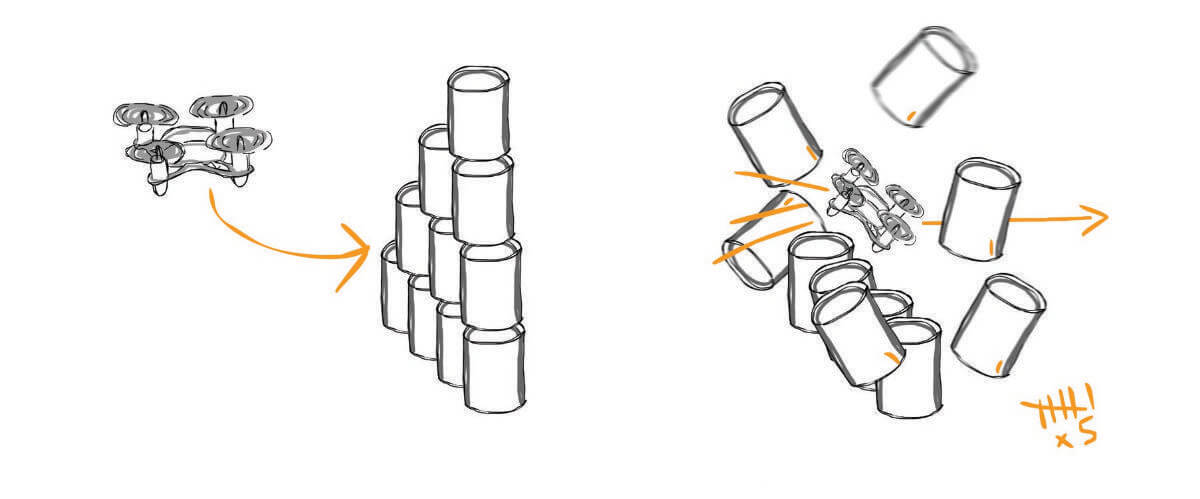
Part 3: Prototype
Quick prototypes are key for validating whether a project like this is worth the effort. In this case the goals of the obstacle course are clear – to be fun and challenging. Both can be validated with quick prototypes and there’s nothing better for that than some dollar-store foam board and hot glue (And in this case, some old toilet paper rolls 💩)
Part 4: Production
Part Design
Many of the obstacles were modeled in Google Sketchup. This allowed for 3D printing of the pieces. The game board was designed in Illustrator and printed on paper using a large format printer. In production versions of the game the pieces might be injection molded and the board could be printed on a fabric material to make it easy to fold or roll and store in a game box without damaging it.
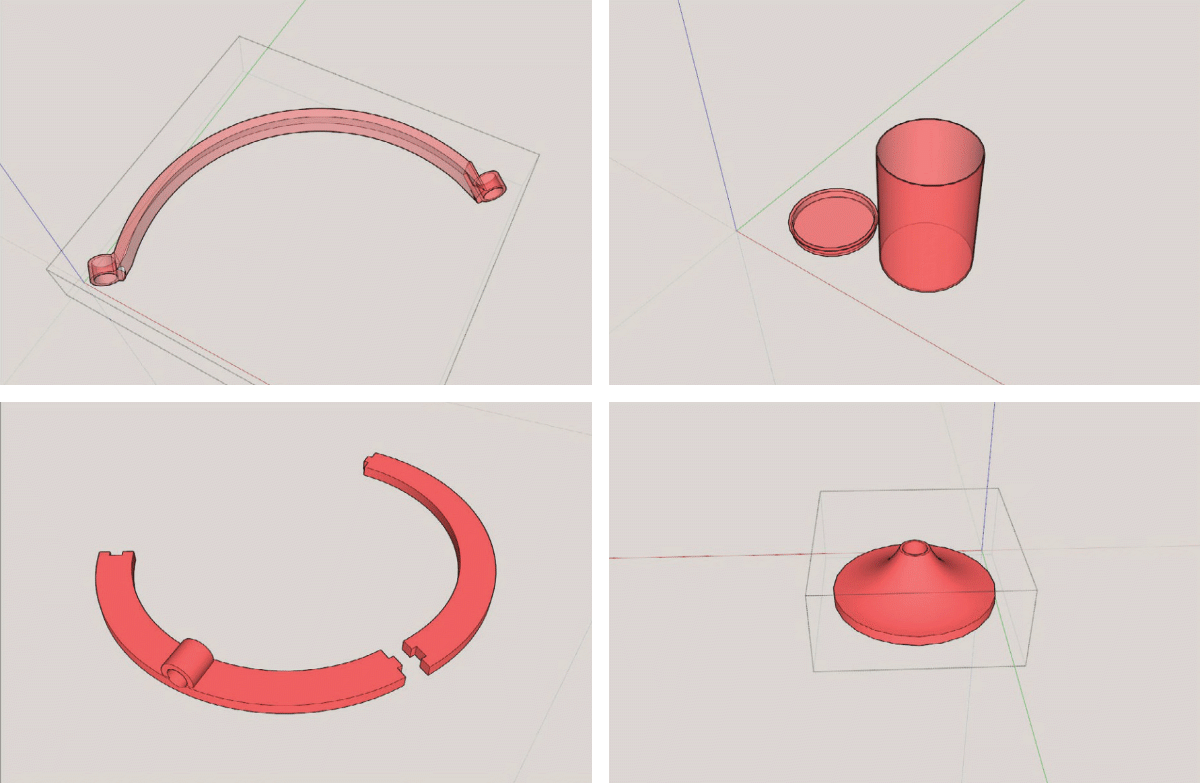
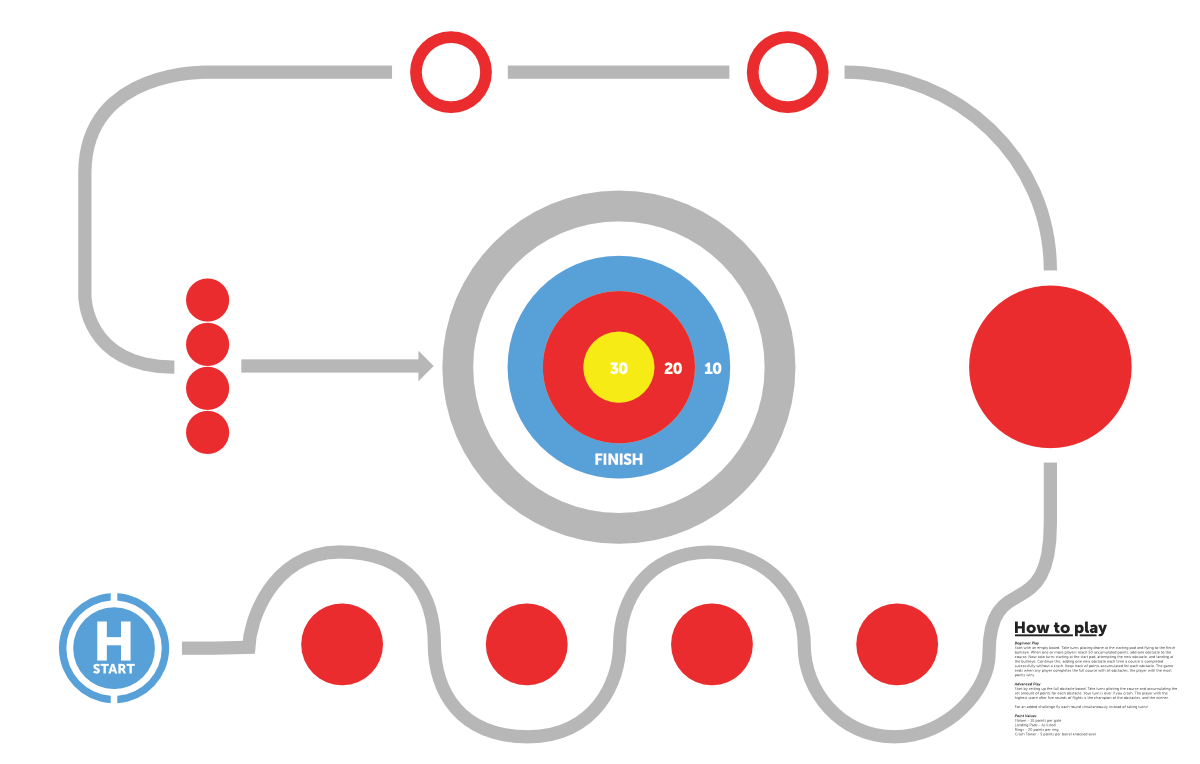
Completed Design
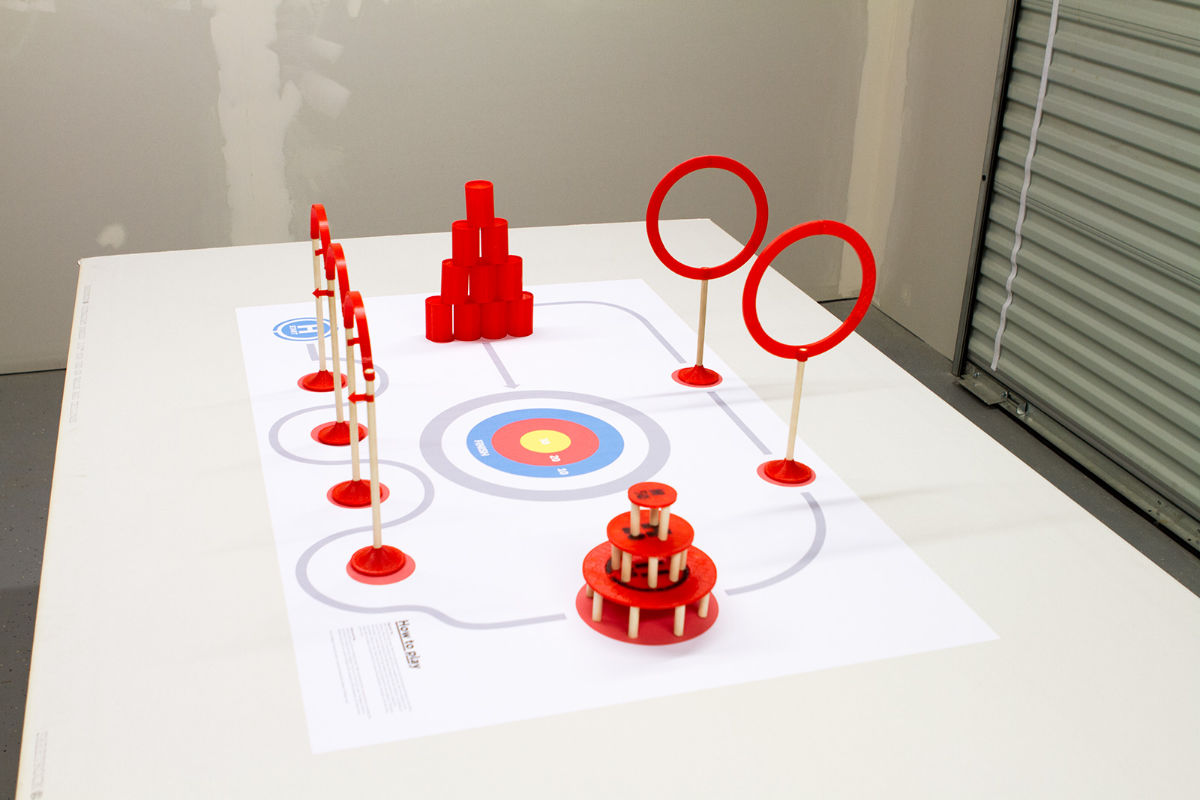
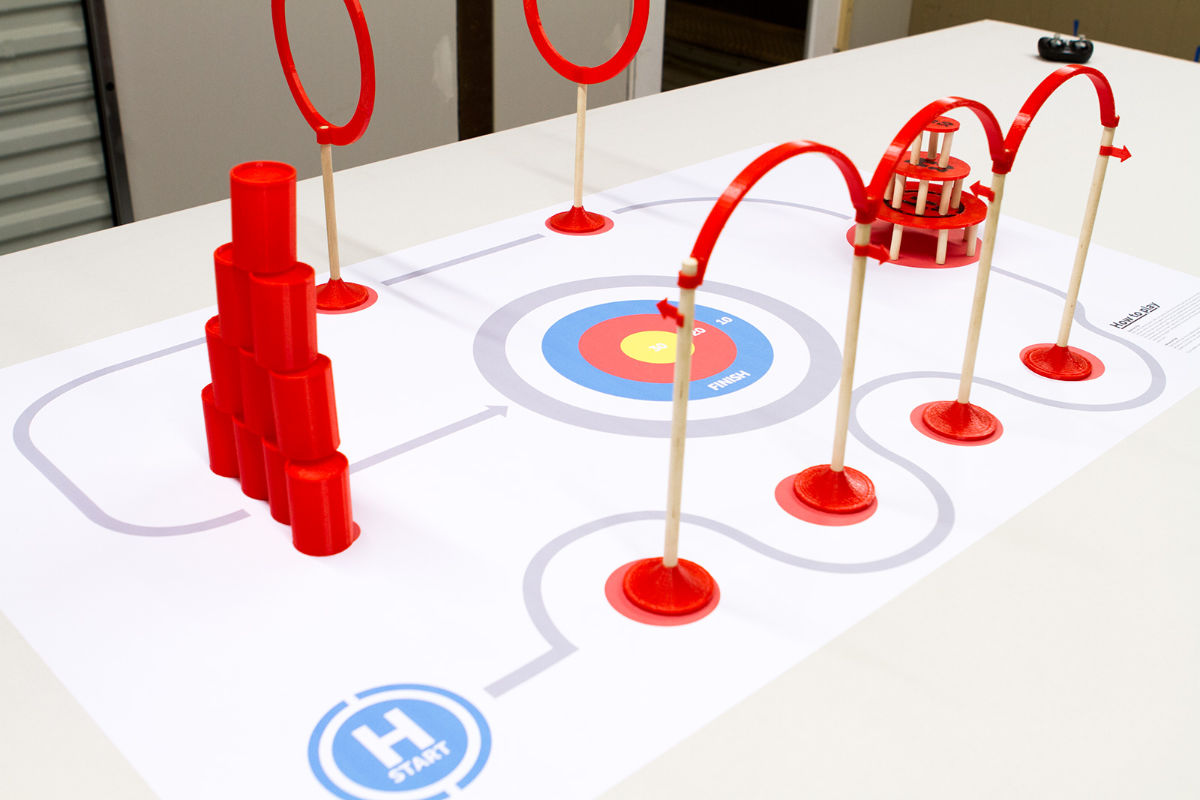
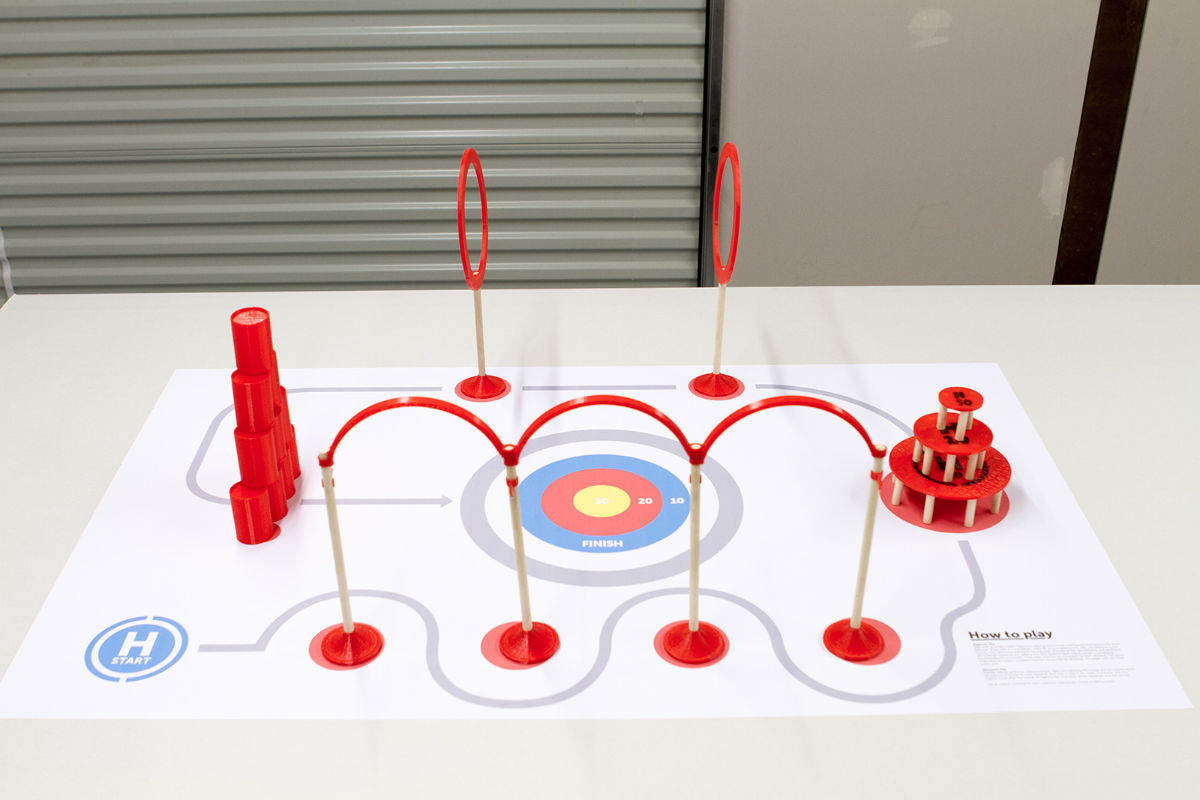
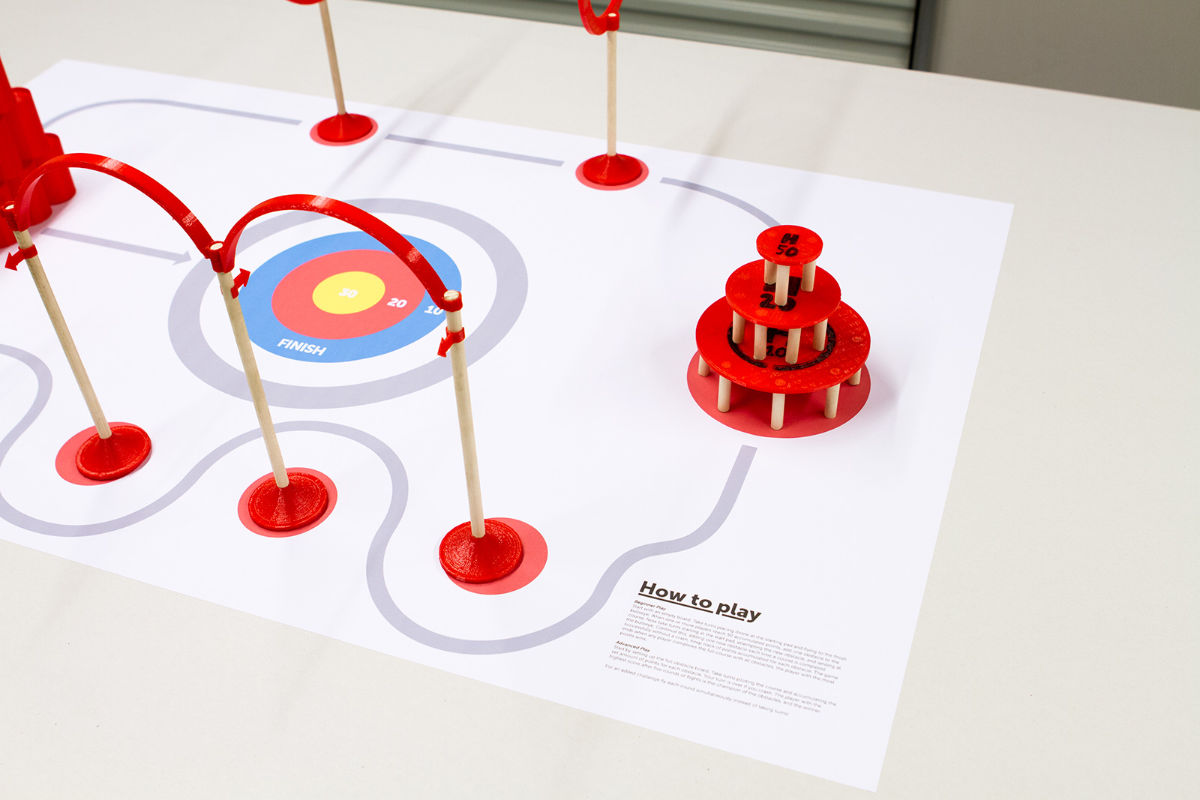
Final Thoughts
Designing and producing this game has been an enjoyable challenge. There have been many revisions and updates along the way from sketch to prototype to test to product, and I think the process has yielded a polished game that is fun to play.
Hope you enjoyed a look into the process of this project. Have I mentioned that micro drones are amazing fun with or without an official obstacle course? You should pick one up they’re (as of writing this note in 2019) like $18 for the same type of quadcopter used in this project – this blows my mind 🤯.